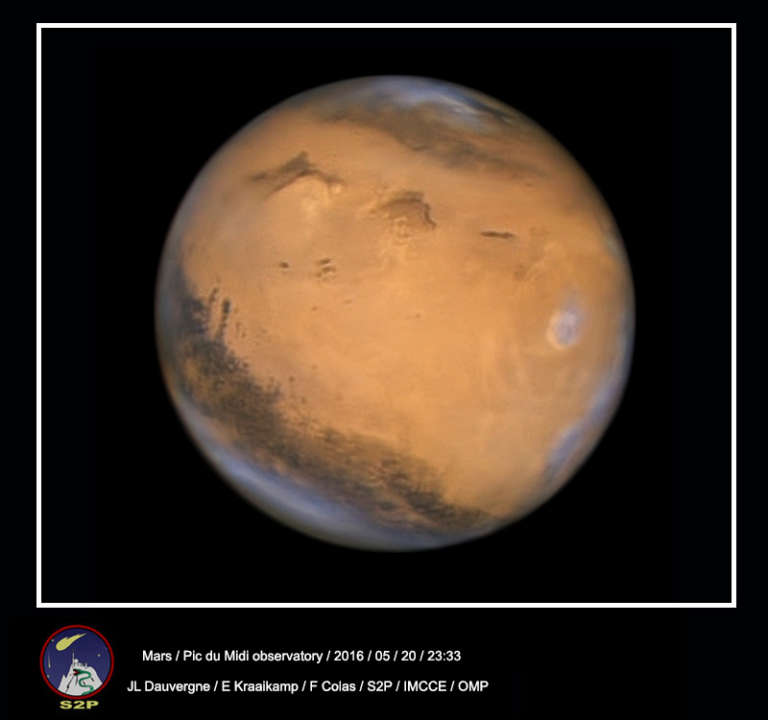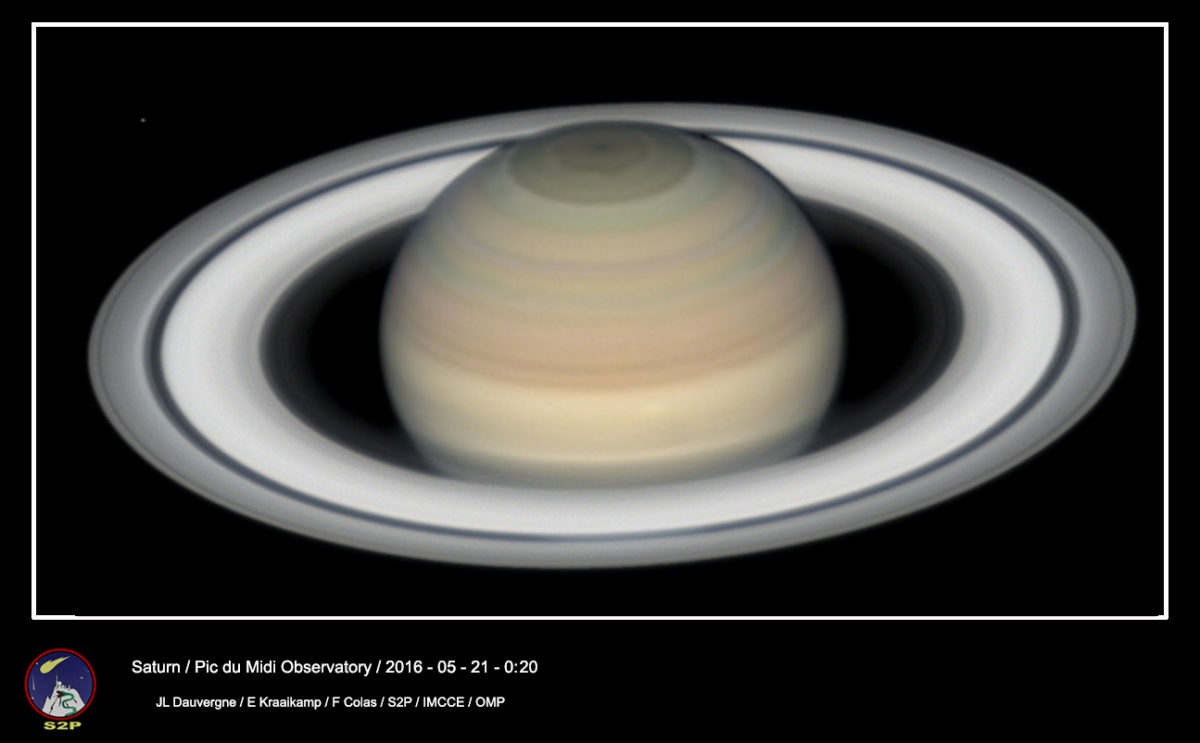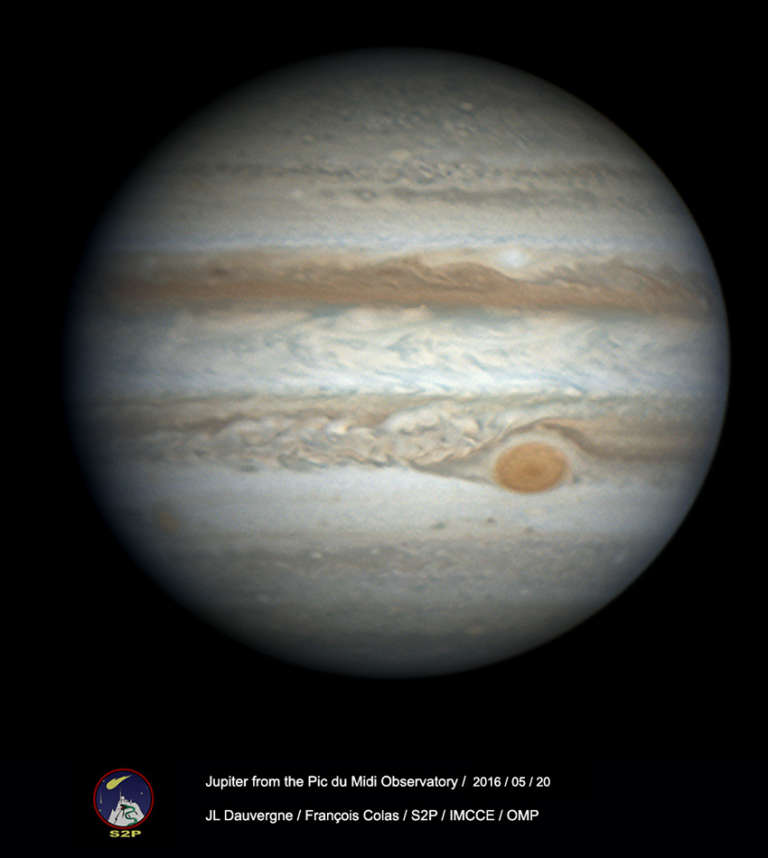Emily Lakdawalla • May 26, 2016
Three bright planets: Portraits from the Pyrenees
It's a great time to go outdoors and look at planets. I have three glorious planetary portraits to share today, sent to me by amateur astronomer Jean-Luc Dauvergne. He's been observing for the last week, he said, from Pic du Midi Observatory in the French Pyrenees, using a 1-meter telescope built in 1963 to perform lunar mapping to prepare for the Apollo missions.
Mars is much in the news right now, as it was at opposition on May 22 and it will be closer to Earth than it has been for 11 years on May 30. Its orange glow is easy to spot in the night sky, even from inside a building. That means that it's an especially good time to view it from Earth-based observatories. Enjoy the clouds above Mars' great volcanoes, and give a little wave to Gale crater, where Curiosity is toiling away.

Dauvergne also turned the telescope toward Saturn, which will be at opposition in just a few days, on June 2. It's also almost exactly a year away from summer solstice, which means Saturn's rings are tilted dramatically open, the outer edge of the A ring visible all the way around the planet. About this photo, Dauvergne wrote: "I think that it's the first time that a picture from the ground shows Encke gap all around with a telescope smaller than Hubble (The VLT obtained the same kind of resolution in the infrared)."

Finally, there is Jupiter. Amateur astronomers around the world are collecting as many good photos of Jupiter as possible to support the Juno mission, which will enter orbit in just 6 weeks. Dauvergne told me "Just the week before, I was in Nice with Glenn Orton, Leigh Fletcher, Christopher Go, Damian Peach, Emil Kraaikamp, Ricardo Hueso, Agustin Sanchez, and many others to talk about better ways to help Juno and Junocam." Jupiter's opposition was on March 8, and Earth is rapidly outpacing it in its path around the Sun; by September, it will be impossible to see for a while, during conjunction.

Readers may not have access to a telescope like Pic du Midi, but you can all go outside and look up at the brilliant planets visible right now in our night skies!
The Time is Now.
As a Planetary Defender, you’re part of our mission to decrease the risk of Earth being hit by an asteroid or comet.
Donate Today

 Explore Worlds
Explore Worlds Find Life
Find Life Defend Earth
Defend Earth

